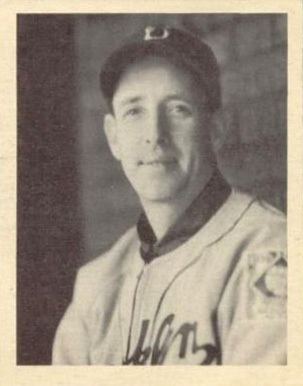 | ||
Local radio WHNRed Barber, Al Helfer | ||
The 1941 Brooklyn Dodgers, led by manager Leo Durocher, won their first pennant in 21 years, edging the St. Louis Cardinals by 2.5 games. They went on to lose to the New York Yankees in the World Series.
Contents
- Offseason
- Notable transactions
- Starters by position
- Other batters
- Starting pitchers
- Other pitchers
- Relief pitchers
- 1941 World Series
- Game 1
- Game 2
- Game 3
- Game 4
- Game 5
- Awards and honors
- League top ten finishers
- Farm system
- References
In The New Bill James Historical Baseball Abstract, this team was referenced as one of "The Greatest Teams That Never Was", due to the quality of its starting lineup. Dolph Camilli was the slugging star with 34 home runs and 120 RBI. He was voted the National League's Most Valuable Player. Pete Reiser, a 22-year-old rookie, led the league in batting average, slugging percentage, and runs scored. Other regulars included Hall of Famers Billy Herman, Joe Medwick, Pee Wee Reese, and Dixie Walker. Not surprisingly, the Dodgers scored the most runs of any NL team (800).
The pitching staff featured a pair of 22-game winners, Kirby Higbe and Whitlow Wyatt, having their best pro seasons.
Offseason
Notable transactions
Starters by position
Note: Pos = Position; G = Games played; AB = At bats; R = runs; H = Hits; Avg. = Batting average; HR = Home runs; RBI = Runs batted in; SB = Stolen bases
Other batters
Note: G = Games played; AB = At bats; R = runs; H = Hits; Avg. = Batting average; HR = Home runs; RBI = Runs batted in; SB = Stolen bases
Starting pitchers
Note: G = Games pitched; IP = Innings pitched; W = Wins; L = Losses; ERA = Earned Run Average; BB = Bases on balls; SO = Strikeouts; CG = Complete games
Other pitchers
Note: G = Games pitched; IP = Innings pitched; W = Wins; L = Losses; ERA = Earned Run Average; BB = Bases on balls; SO = Strikeouts; CG = Complete games
Relief pitchers
Note: G = Games pitched; IP = Innings pitched; W = Wins; L = Losses; SV = Saves; ERA = Earned Run Average; BB = Bases on balls; SO = Strikeouts
1941 World Series
The 1941 World Series matched the New York Yankees against the Dodgers, with the Yankees winning in five games to capture their fifth title in six years, and their ninth overall.
The name "Subway Series" arose for a World Series played between two New York City teams. The series was punctuated by the Dodgers' Mickey Owen's dropped third strike of a sharply breaking curveball (a suspected spitball) pitched by Hugh Casey to Tommy Henrich in the 9th inning of Game 4. The play led to a Yankees rally and brought them one win away from another championship.
The Yankees were back after a one-year hiatus, having won thirteen (13) of their last fourteen (14) Series games and twenty-eight (28) of their last thirty-one (31) games in the World Series.
This was the first Subway Series between the Brooklyn Dodgers and New York Yankees, who had already faced the crosstown New York Giants five times, and the Series was now 1–0 in favor of the Bronx Bombers. These two teams would meet a total of seven (7) times from 1941–1956 – the Dodgers' only victory coming in 1955.
Game 1
October 1, 1941, at Yankee Stadium in New York
Game 2
October 2, 1941, at Yankee Stadium in New York
Game 3
October 4, 1941, at Ebbets Field in Brooklyn, New York
Game 4
October 5, 1941, at Ebbets Field in Brooklyn, New York
Game 5
October 6, 1941, at Ebbets Field in Brooklyn, New York
Awards and honors
League top ten finishers
Dolph Camilli
Kirby Higbe
Joe Medwick
Pete Reiser
Whit Wyatt
Farm system
LEAGUE CHAMPIONS: Montreal, Durham, Santa Barbara, Elizebethton, Newport
